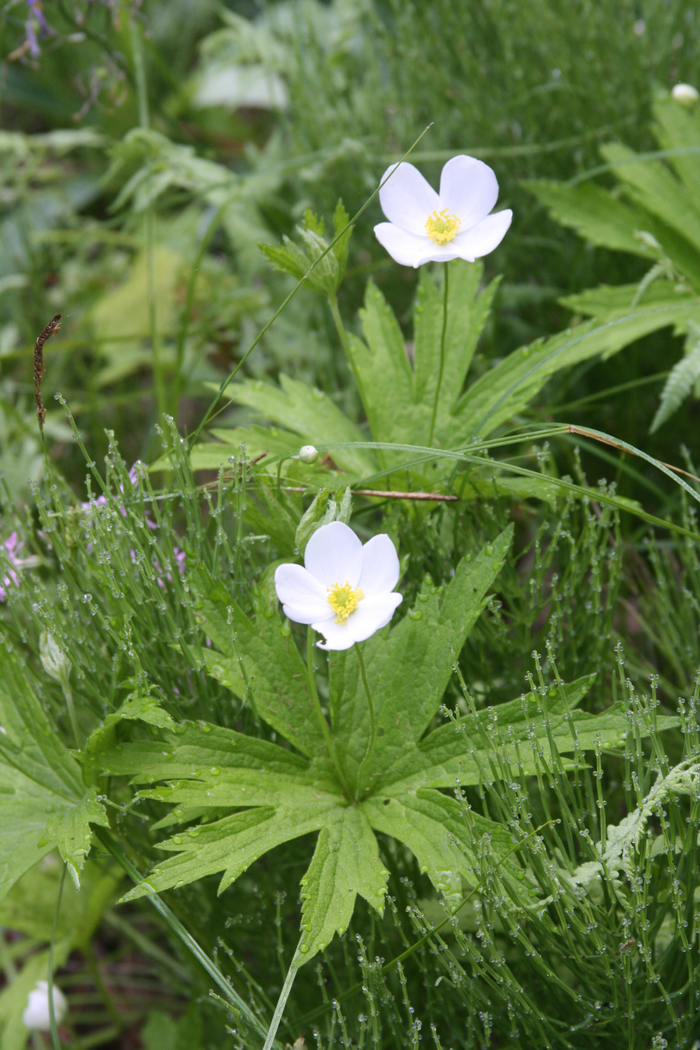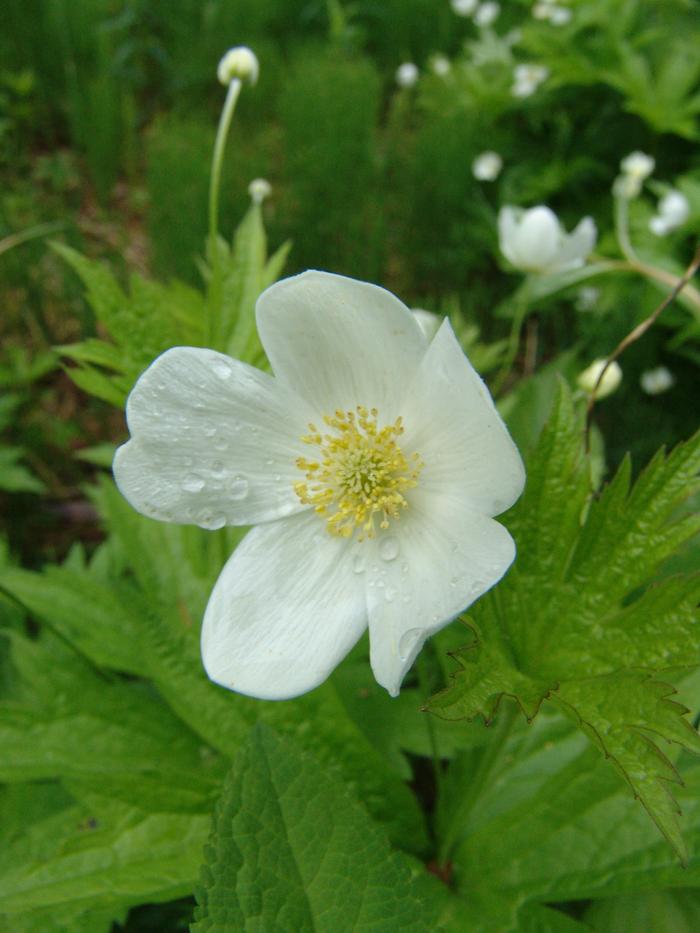General Description
Bloom Description: Pure white, cup-shaped, upward-facing flowers bloom from April to June.
Growth Habit & Shape: Whorled, deeply lobed leave are highly ornamental, similar to geranium. Spreads aggressively by rhizome and seed.
Soil Preferences: Prefers circumneutral pH (6.8-7.2) soil, but is also adapted to more acidic New England soils. Thrives in organically rich, moist soils.
Root Description: This species is rhizomatous, but the roots can seem small and insignificant compared to the fast-moving, adaptable and hardy nature of the plant.
Garden Uses: Can be used for naturalizing; in stands of larger perennials like penstemons, milkweeds, asters, goldenrods, mountain mints, etc.; Also works well with spring ephemerals in between shrubs in place of mulch, or under a more open and high, mature tree canopy mixed with other understory plants.
Best Management & Maintenance: This plant is extremely low maintenance; foliage makes it beautiful all through the growing season. Weed out from wherever it is not wanted, though it can be a challenge to eradicate from an area where it is already established. It doesn't take via transplant as well as it does through spreading and self-seeding.
Common Problems: typically none.
Benefits
Ornamental Value: Very attractive, deep green foliage. Flower is relatively large, and fields or mats of this plant are stunning when the entire space is in bloom.
Wildlife Benefits: Host plant for the veiled ear moth (Loscopia velata) and the one-lined Sparganothis (Sparganothis unifasciana). Also provides pollen to a wide variety of native bees.
Other Practical/Environmental Benefits: Useful for erosion control. Attracts predatory and parasitoid wasps that prey on common insect pests.
Use in place of: lawn, barberry, Japanese Pachysandra, Vinca, mulch.
Ecology
Habitat:
Per the Flora of North America, found in “damp thickets, meadows, wet prairies, lake shores, streamsides, clearings, occasionally swampy areas[...]”
Response to Disturbance: Though aggressive in optimal condition, opinions regarding this plant's successional status differ across its geographic range. Stands are reduced by repeated mechanical damage (trampling), but plants re-sprout from remaining rhizomes.
Native State Distributions:
Canada: AB, BC, MB, NB, NF, NS, NT, NU, ON, PE, QC, SK
USA: CO, CT, DC, IA, IL, IN, KS, KY, MA, MD, ME, MI, MN, MO, MT, ND, NE, NH, NJ, NM, NY, OH, PA, SD, TN, VA, VT, WI, WV, WY
Wetland indicator status: [WETLAND INDICTOR]
References
Return to Top



